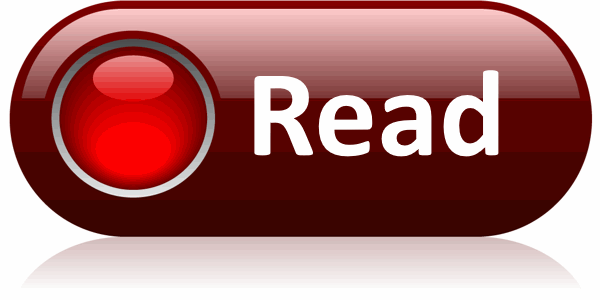By Mike Loughrin, CEO for Transformance Advisors and Jacqui Ruppel, Senior Investigator for Employment Compliance Solutions LLC
Insights from 60 Experts
Tracking the performance of onsite employees is an important aspect of ensuring individual actions are aligned with organizational objectives.
The daily news offers example after example of people chasing some measurement which earns them a reward while destroying the profit or reputation of their employer. It is a pattern which includes executives chasing stock options by focusing on short term numbers and customer service representatives opening fake accounts to meet ridiculous goals.
In our quest to identify the best ways to track employee performance, we reached out to 60 experts asking for their favorites ways. We broke our request to the experts into 2 types – 1 for onsite employees and 1 for remote employees. The balance of this article explores the favorite ways for tracking the performance of onsite employees. Another article focusing on remote employees can be found at Tracking Performance for Remote Employees.
Let’s take a look at the favorite ways for tracking performance for onsite employees and read what some of the experts have to say.

Favorite Techniques
Our experts reported 173 of their favorite techniques for tracking performance. The top 8 are:
- Task Completion: Getting the job done is the winner with 26% of the favorites dealing with some aspect of people completing the tasks they are assigned. Different versions of how to measure task completion group into speed, quality, and waste.
- Customer Relationships: Interactions with customers came in second with 18% of the techniques identified by our experts. These include educating customers on products and services, keeping them informed, and tracking customer retention.
- Problem Solving: Taking the initiative and having the skills to solve problems comprised 11% of the favorites. This correlates to research which indicates problem solving is one of the top skills sought by employers.
- Collaboration with Colleagues: Coming in at 8%, our experts like to track how well people are collaborating with one another. This is often connected to meeting customer needs or problem solving.
- Safety: Tracking safety issues and incidents was the topic for 7% of the favorites. There was an even split between incidents, tracking compliance, and collecting “near-miss” events.
- Process Improvement: Contributing to process improvement is in 6th place at 6%. One interesting note is how 5 experts mentioned “knowledge transfer” as a key element for process improvement. Using the old-fashioned “suggestion box” was only mentioned once.
- Peer Feedback: Collecting feedback from peers was also at 6%. The integration of techniques can be seen in how things like collaboration and knowledge transfer reflect on the need for people to work closely with other members of their team.
- Cross Training Participation: The eighth item, coming in at 4%, has our experts indicating the importance of having multiple skills. The use of the word “participation” is interesting in how it implies people need to take ownership and seek out opportunities for cross training.
“I measure leftover materials at job completion against initial estimates. This metric reveals planning skills and attention to detail that directly impacts profitability.”
– Ed Sartell, President, Sartell Electrical Services, Inc
“Tracking both the volume of completed tasks and the quality standards met provides a balanced view of productivity and craftsmanship.”
– George Rizk, Senior Manufacturing Engineer, Gerard Daniel Worldwide
“I measure how many customers specifically request certain team members for advice.”
– Jodi McConnell, CEO, Uniform Connection
“I evaluate how well employees understand each client’s business beyond surface-level needs.”
– Nicole Farber, CEO, Nicole Farber
“I measure how quickly technicians solve unexpected issues, on their own, before calling for backup.”
– Clay Hamilton, President, Grounded Solutions
“I measure how quickly team members can identify and solve problems that span multiple departments or expertise areas.”
– Nate Raine, CEO, Thrive
“I track how fast team members from different areas collaborate to resolve unexpected issues.”
– James Bernard, Principal Owner, Alcatraz Escape Games
“I measure how often team members proactively reach out to help colleagues or share resources without being asked.”
– Ted O’Shea, Tradeshow Event Manager, The Great American Franchise Expo
“I count how often crews report potential hazards before accidents happen.”
– Steve Mlynek, CEO & Founder, HomeBuild Windows, Doors, & Siding
“Techs with 95%+ safety scores have 0 workplace injuries and complete jobs 20% faster.”
– Billy Gregus, Owner, Integrity Refrigeration & AC
“I measure how often floor staff suggest workflow or safety improvements.”
– Doug Lindqvist, General Manager, Pinnacle Signage
“I measure how quickly team members apply new training concepts in real patient interactions.”
– Tim Johnson, CEO, BIZROK
“Peer feedback uncovers interpersonal dynamics and collaboration effectiveness, highlighting areas that metrics alone might miss.”
– Arvind Rongala, CEO, Invensis Learning
“Feedback from colleagues about communication, teamwork, and problem solving gives a fuller picture of how an employee operates.”
– Ydette Florendo, Marketing coordinator, A-S Medical Solutions
“I track which team members volunteer to learn additional stations beyond their primary role.”
– Rudy Mosketti, Founder, Rudy’s Smokehouse
“I track which employees actively learn multiple roles within the club operations.”
– Pleasant Lewis, Owner, Just Move Athletic Clubs
Quantitative and Qualitative
Our experts provided a mix of quantitative and qualitative measurements.
Quantitative refers to measurements which can be directly measured numerically. These measurements give clear, objective answers about productivity and efficiency. They’re generally easy to track, explicit in interpretation, and are often used for tasks or roles with a clear numerical output or deliverable.
In terms of the favorite techniques provided by our experts, task completion and safety had a high percentage of quantitative measurements.
Qualitative measurements capture more nuanced and subjective aspects of employee performance. While not always directly measurable, their significance lies in assessing characteristics like skills, initiative, teamwork, and creativity. These evaluations often require input from supervisors, peers, and even customers who interact with the employees frequently.
In terms of the favorite techniques provided by our experts, customer relationships, problem solving, and peer feedback had a high percentage of qualitative measurements.

“I track how effectively experienced workers pass down technical skills to newer employees.”
– Chelsey Christensen, Director of Operations, Crabtree Drilling
Summary
Tracking the performance of onsite employees is an important aspect of ensuring individual actions are aligned with organizational objectives.
We collected insights from 60 experts by asking for their favorite ways to track employee performance.
Not surprising is seeing task completion” at the top of the list. Other favorites included “customer relationships, problem solving,” and “collaboration with colleagues”.
There were surprises with a couple of the old standards missing from the top 8. The techniques which only a few experts favor included “attendance, audits, direct observation, and feedback from customers”.

“Measure what is measurable, and make measurable what is not so.”
– Galileo Galilei
Mike Loughrin is the CEO and Founder of Transformance Advisors. He also teaches for Louisiana State University Shreveport and is on the board of directors for the Association for Supply Chain Management Northern Colorado.
Mike brings exceptional experience in industry, consulting services, and education. He has directed several Lean Transformation programs and has helped organizations such as Levi Strauss, Warner Bros., Cabela’s, Constellation Brands, Lexmark, and Sweetheart Cup.
Keeping a commitment to a balanced life, Mike loves downhill skiing, bicycle rides, and hiking in the mountains. See one of his trails of the month at: Little Switzerland.
References
10 Problem Solving Skills Employers Want by Hogan Short.

